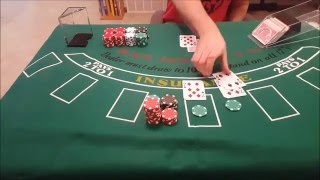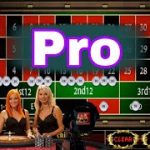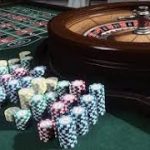Blackjack Strategy Video Source & Information:
This video covers the 10 most misplayed blackjack hands according to basic strategy. It doesn’t base gameplay on the current count; however, this is specific for a 2 deck blackjack shoe. If there is enough interest I’ll make a top 10 video for 6 deck blackjack too!
Be sure to check out my channel for more great statistic-based casino games.
Source: YouTube








So many times I've seen my friend double on his 11 when the dealer shows a 10, and he gets a badty card and loses double his money. I NEVER double my 11 the dealer has a potential 20 or 21. Bad choice, and bad advice.
The first one—not the Wizard's rule. A 7 and up is a high card. The Wizard says with a double 2.3.6.7.9 you split if the dealer has a small card and hit if the dealer has a high card.
This guy must work for the casino! You never split 4.5. or faces according to the Wizard
And you NEVER double an 11 when the dealer has an ACE. So many mistakes from this guy. Just go to the Wizard directly. Why listen to this guy?
You need to go go back to school, totally cr*"ap lol
Ed Thorpe created basic strategy 😬
Less than 50/50 to win on a double…no thanks, I'll take a hit thank you very much. Figure anything less than 9 will more than likely lose, or has for ME, every time I have tried it over the last 60 years or so. 39 "good" cards out of (104 -3 seen =) 101 cards or about a 38.6% chance to win with a double down. Even adding 8 as a "good" card still gives only a 46.5% chance. NOTE: I consider the chance of busting is offset by the chance you TOOK the Dealer's bust card and the chance of losing double vs winning single by hitting.
Stupid video, don't like it
You are the first one that says 11 against ace double down. Are you kidding me?
You are wrong on the 2nd one. You should double on a soft 18 against a dealer's 2. Especially in a 2 deck game. The truecount threshold for doing this is -.52. That means you double soft 18 against 2 if the truecount is anything more than NEGATIVE .52. Which means basic strategy says you should do it in general, as that is what is calculated for a truecount of 0. You are also actually wrong to say you should double 11 against ace. The truecount threshold for that decision is actually the closest to 0 of anything, even closer than 16 against 10. The truecount threshold is -.04. Which means technically it increases your expected return if the count is 0 to double 11 against ace, but it is so slightly, that it is not worthwhile to do it for it raising the standard deviation of the outcome by doubling your bet, for the case of kelly optimality where you are concerned with your bankroll on a logarithmic scale and steps back are more substantial than steps forward. Meaning, only double 11 against ace if the count is actually POSITIVE. Note that includes the ace and the cards comprising the 11, so if you have a 4 and a 7 or a 5 and a 6, then there's a positive count from those 3 cards and it's worthwhile. And really the ace counts as a low card for that scenario, since you don't want to get an ace when doubling on 11, so the count is ostensibly high enough to justify it, if you aren't counting cards and know nothing but those 3 cards. But in general, only double 11 against ace if the count is positive, not 0 or negative.